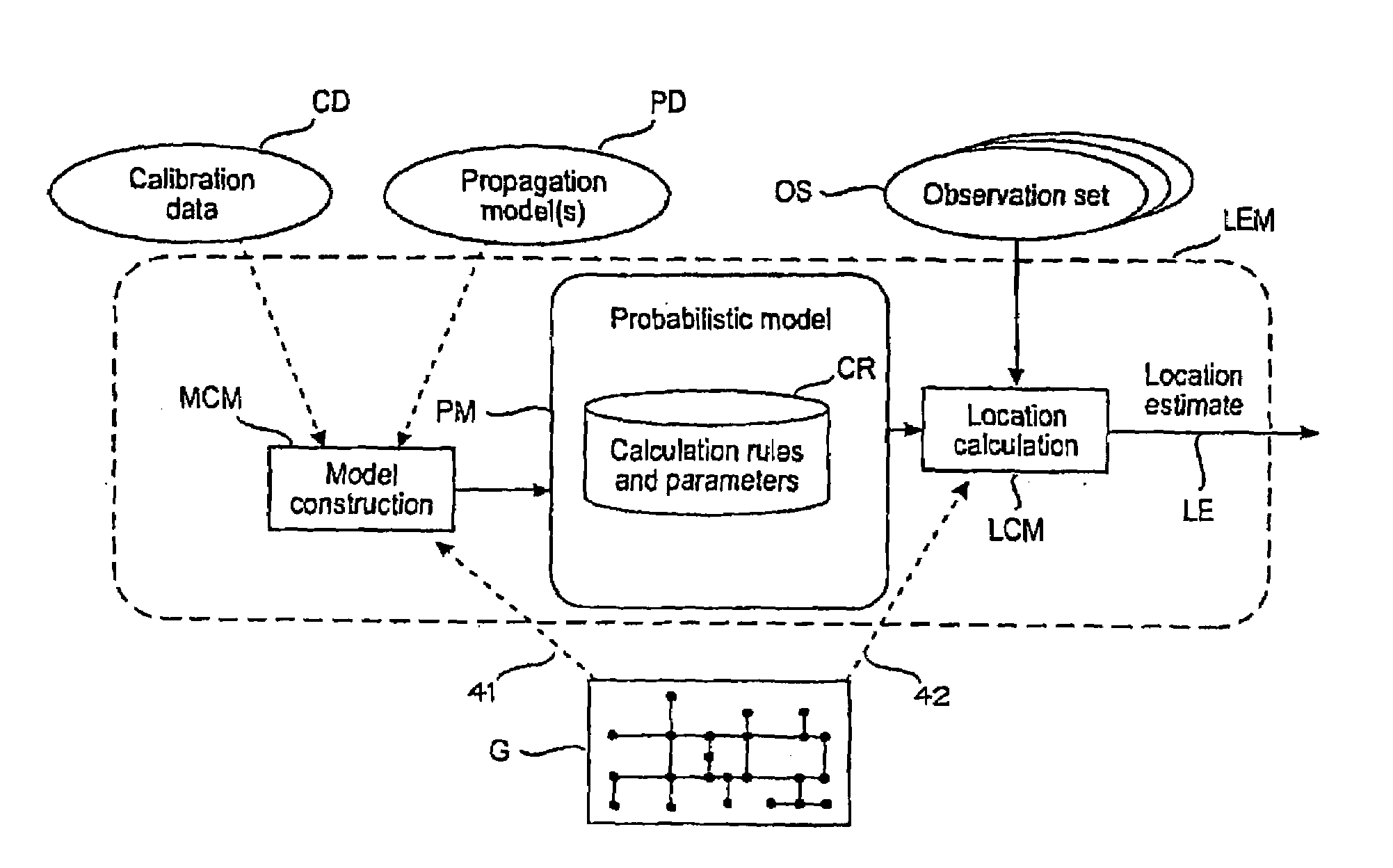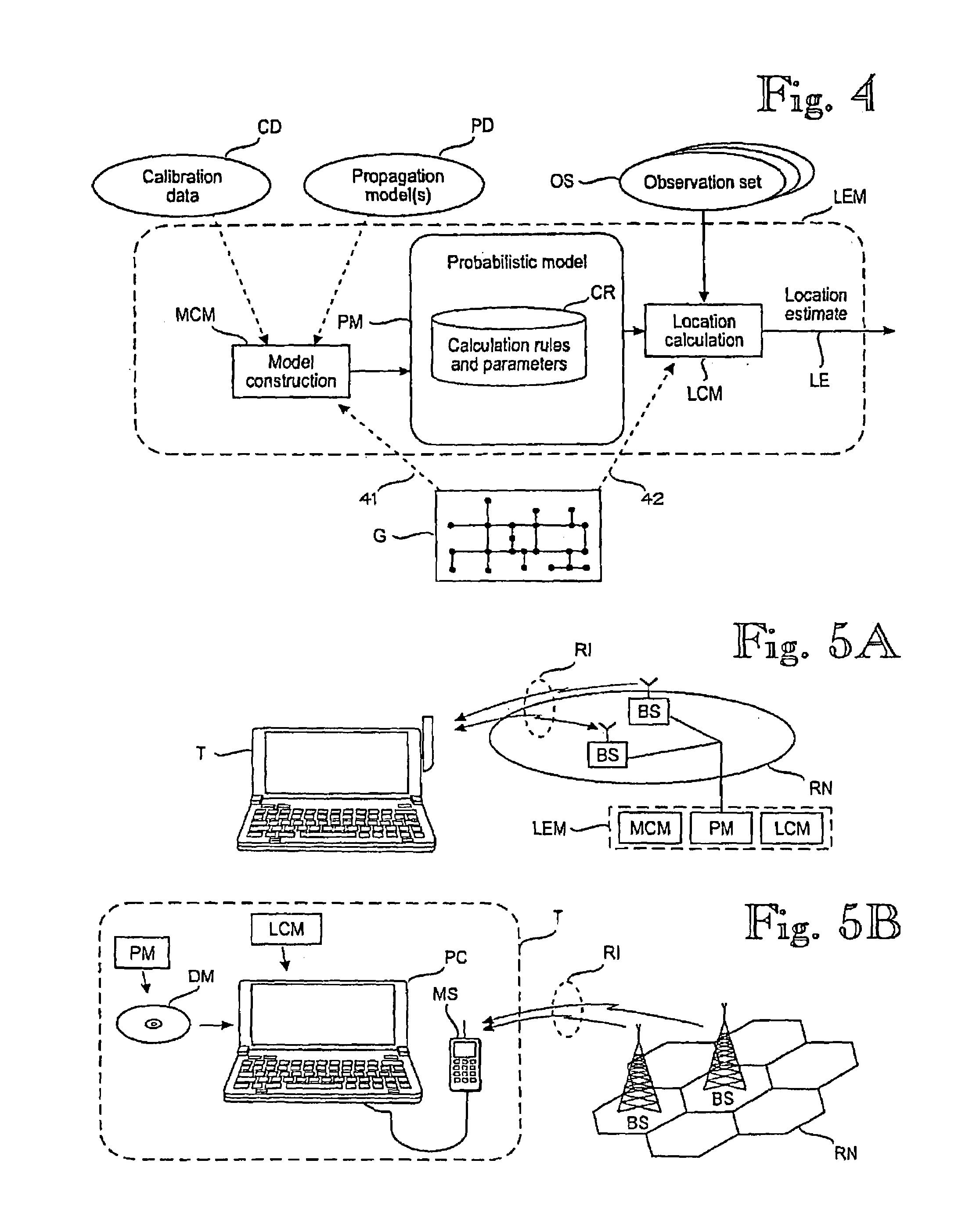Positioning technique
a positioning technique and positioning technology, applied in the field of positioning techniques, can solve the problems of grossly inaccurate positioning estimation, and achieve the effects of reducing the resolution, improving the quality of data mining operations, and facilitating analysis
- Summary
- Abstract
- Description
- Claims
- Application Information
AI Technical Summary
Benefits of technology
Problems solved by technology
Method used
Image
Examples
Embodiment Construction
[0032]FIG. 3 illustrates a graph G according to the invention. In this example the graph G comprises two subgraphs G1 and G2 such that subgraph G1 corresponds to the floor plan 31 of the first floor and subgraph G2 corresponds to the floor plan 32 of the second floor. The graph comprises nodes, drawn as black circles, such that each node indicates a permissible location for a target device. The distance between nodes should be selected on the basis of the desired resolution. In most applications, the resolution (inter-node distance) is approximately one meter. A smaller distance gives a better resolution at the cost of increased consumption of resources. The consumed resources include calibration measurements, memory for storing the probabilistic model and computation power. For most office rooms, a single node is sufficient, such as the node 311 in the upper left-hand room. On the other hand, larger rooms may have more nodes such as the nodes 312 and 313 in the lower left-hand room...
PUM
 Login to View More
Login to View More Abstract
Description
Claims
Application Information
 Login to View More
Login to View More - R&D
- Intellectual Property
- Life Sciences
- Materials
- Tech Scout
- Unparalleled Data Quality
- Higher Quality Content
- 60% Fewer Hallucinations
Browse by: Latest US Patents, China's latest patents, Technical Efficacy Thesaurus, Application Domain, Technology Topic, Popular Technical Reports.
© 2025 PatSnap. All rights reserved.Legal|Privacy policy|Modern Slavery Act Transparency Statement|Sitemap|About US| Contact US: help@patsnap.com



